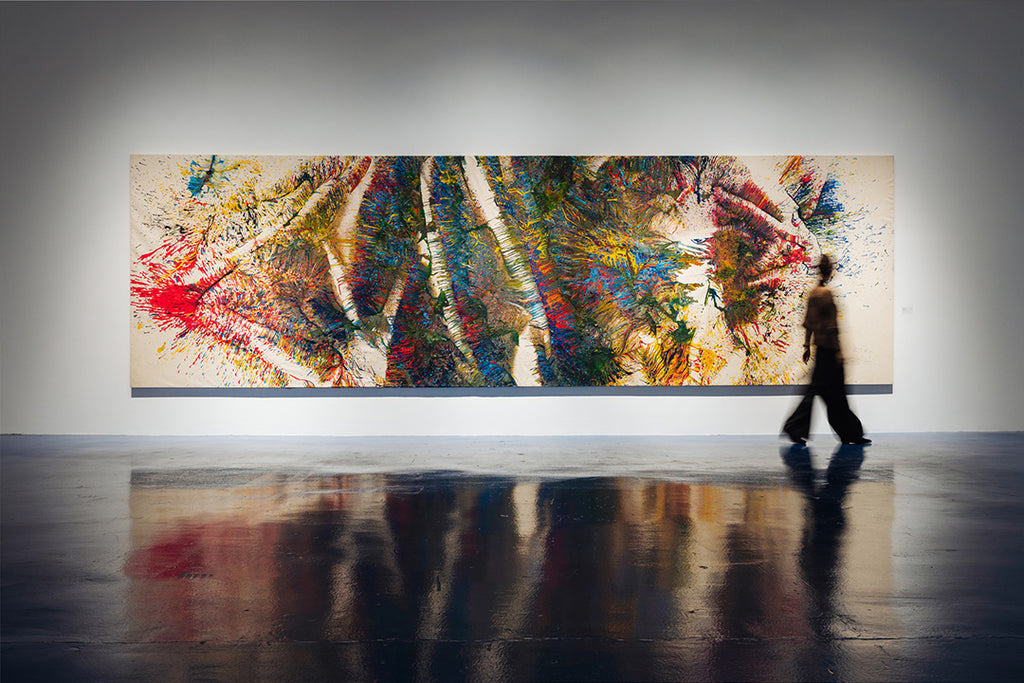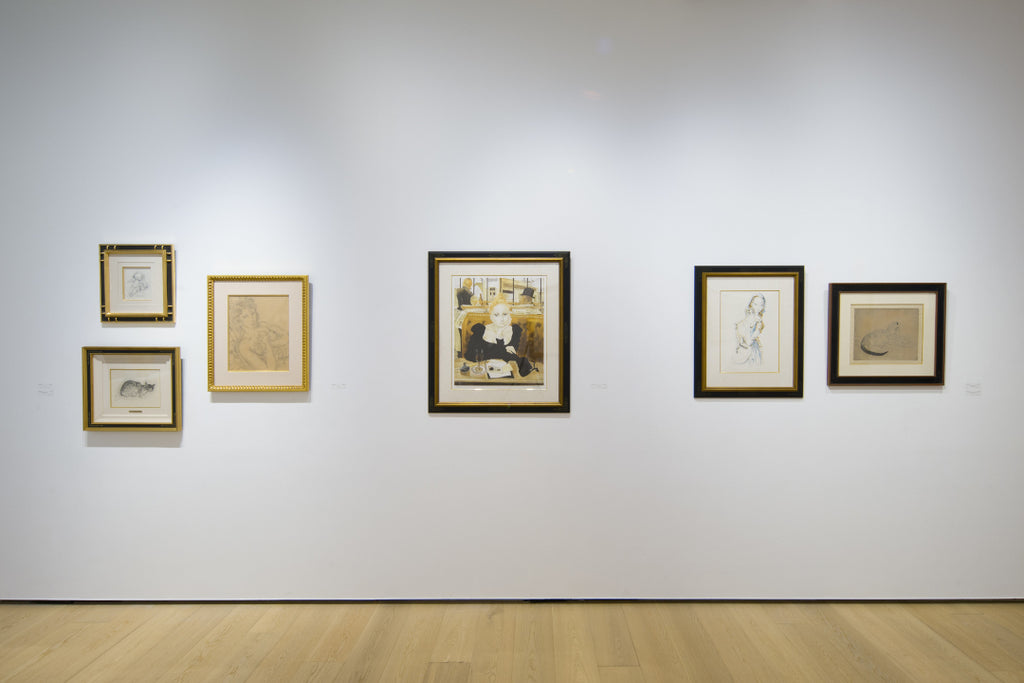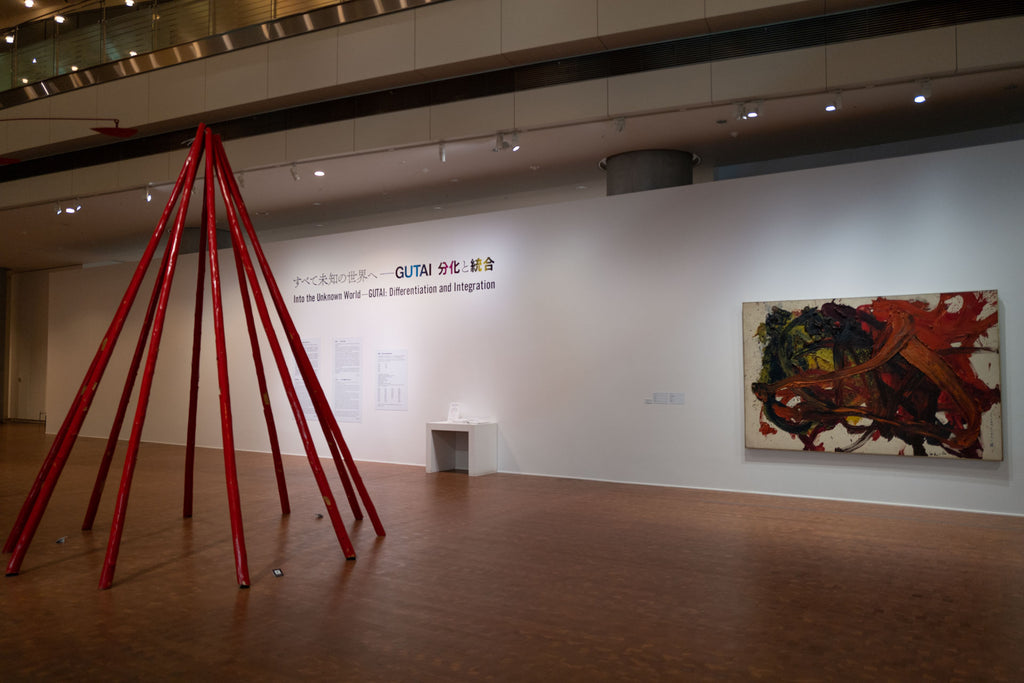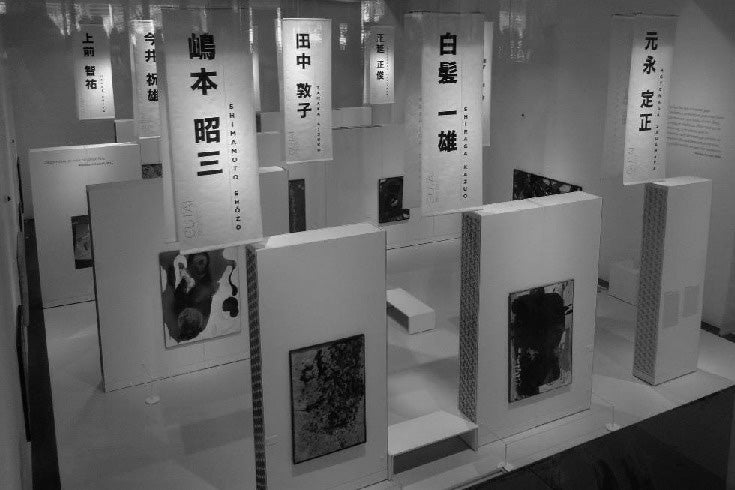ARTICLES
Japanese Kinetic Art Pioneer Yutaka Matsuda and his Paris Adventure
GUTAI STILL ALIVE 2015 vol.1
34/35
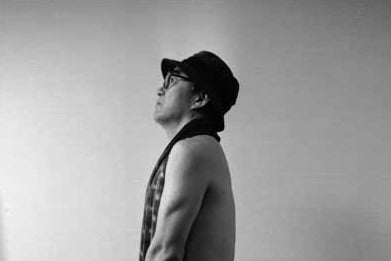
Yutaka Matsuda
A project evolving the digitized archive of the book, “GUTAI STILL ALIVE 2015 vol.1”. The 34th edition introduces Yutaka Matsuda, a central member of Gutai in its later years, and one of the few kinetic artists in Japan. Matsuda got into kinetic art after a chance meeting with the famous kinetic artist Yaacov Agam. He would eventually bring his works to a gallery in Paris. Sumiko Imada, who joined Matsuda on his Paris adventure, talks about Matsuda's disposition at the time.
The “Chance” and “Adventure” of Yutaka Matsuda
Sumiko Imada
Former Director of Osaka Contemporary Art Center
“Gallery do” was on the fifth floor of a building located in a western corner of the Namba district in Osaka. With an area of some 100 sq. meters, it comprised a small exhibition space and a large lecture room. Its owner, Yutaka Matsuda, was one of the few kinetic artists in Japan. He was teaching contemporary art, art history and theories to students preparing for art college entrance examinations, young aspirants to art, elderly women, among others. He was one of the youngest members of the Gutai group, which represented Japan’s contemporary art. His generation includes Takesada Matsutani (who lives in France), Sadaharu Horio and Norio Imai.
Kinetic art means a type of contemporary artwork that moves or looks as if it moves. Sometimes, as the viewer moves, the work’s colors change. It has both beauty and magic. Foreign masters of kinetic art began to be introduced to Japan in the 1980s. In the Kansai area, exhibitions of Yaacov Agam (Daimaru Museum Umeda, 1989) and Jesús Rafael Soto (Itami City Museum of Art, 1990-91) were held successively. A restaurant in the Shijo Karasuma district in Kyoto commissioned a work to Jean Tinguely. But since nearly 30 years before these events Matsuda had been steadily making Japan’s own kinetic artwork with the spirit of Gutai: “to create artwork that no one else has created.”
First I’ll talk about the “chance.” In 1992, a female pupil of Matsuda met Agam (1928-) by chance on a Shinkansen train. She thought Agam’s art was akin to Matsuda’s and told Agam about Matsuda, and later reported, in the lecture room, the encounter with Agam. Matsuda quickly contacted Agam. Agam also took a keen interest in Japanese kinetic art and accepted gladly an invitation from Matsuda to do a lecture at his gallery. The lecture room was packed with a large audience. There wasn’t even standing room. I served as the interpreter. Agam isn’t a tall man. The crowd pressed my head against Agam’s cheek. The lecture lasted an hour and a half. Agam, who was living in Paris at that time, was so impressed by Matsuda’s work that he eagerly invited Matsuda to visit Paris.
The “adventure” began at that moment. Agam is a master and has a sharp eye. When he persuaded Matsuda to show his works in Paris, Matsuda probably got enthusiastic about the idea. I imagine that he would have quickly selected works to show and arranged their shipment, consulting with his friend and Gutai artist Matsutani in Paris. One day he suddenly said to me, “Can you come to Paris with me? I’ll bear your traveling expenses.” There was no reason for him to pay for my travel, so I declined the financial aid. But I wanted to visit Paris after a long time, to take a break from my busy work. Eventually, Matsuda, his wife, me and a friend of ours left for Paris.
The purpose of the travel was to visit FIAC (Foire Internationale d’Art Contemporain = International Contemporary Art Fair) and a gallery told by Agam which specializes in kinetic art, and negotiate for the gallery to deal with Matsuda’s work. Matsuda perfectly arranged the flight and booked a hotel convenient to visit the fair. On a morning, when we were having breakfast at a nearby café, a waiter asked what brought us to Paris. We said we came to Paris for FIAC. Then the waiter said he would also visit the fair. It seemed that he was visiting the fair every year for pleasure. We were impressed by the fact that visiting an art fair was so popular among Parisians.
Hundreds of gallery booths packed the fair. It was hard to find the booth of the gallery we were visiting, Galerie Denise René. Among the visitors, parents and children were also enjoying looking at gallery booths. Finally we got to the Denise René. A rather small woman, probably in her 60s, was there. I tried to introduce Matsuda saying he was recommended by Agam, but the woman said she was too busy. We said we wanted her to see the works Matsuda had brought from Japan, but the woman insisted that she had plans for day and night during the fair. So I asked her to watch a video of Matsuda just for 10 minutes. She said OK. As she watched the video, however, she got so excited that she almost stood up and gazed at the monitor. Then she told us, abruptly, to come to her gallery at 17:30 with the works, and offered her hand with a smile.
In the evening, on a sidewalk of an avenue lined with boutiques and art galleries, Matsuda was assembling his work leaning it against a tree, when Madame René appeared. She said, “I’m sorry to be late. Please come in. Arrange your works as you like. Outlets are here, and here … ,” like a completely different person from the madame in the daytime. She stared at the works, selected some and told a clerk to bring a contract form because she would keep the works at the gallery. We completed the form. In addition, she was kind enough to pass us an invitation to a vernissage (opening party), the only available on that evening.
We decided to leave the remaining works in Matsutani’s atelier. It was my second time to visit his atelier. He was granted two spacious ateliers from the city of Paris. I was impressed again by the generosity of Paris to support promising artists regardless of nationality. Now the mission of the adventure was completed.
The next day we visited the Louvre, La Défense district (a fountain designed by Agam is found there) and the Centre Pompidou, light-heartedly. The Centre Pompidou is located in Les Halles district, formerly the site of the central market. The huge glassed museum-cum-library has at its entrance a portrait by Agam of President Pompidou, who did the urban reform. A nearby church has a triptych by Keith Haring depicting oldtime workers carrying products to the morning market. Haring’s unique style contrasted with holy pictures and figures. The hordes of tourists packing the area showed that it’s culture that brings people to a place.
Four years later Matsuda won the grand prize at the ABC Painting and Illustration Competition. But he passed away early in 1998, which I deeply regret.
(Mothly Gallery, March 2014)
Read more about the “Gutai Art Association »
*Information in this article is at the time of publication.
